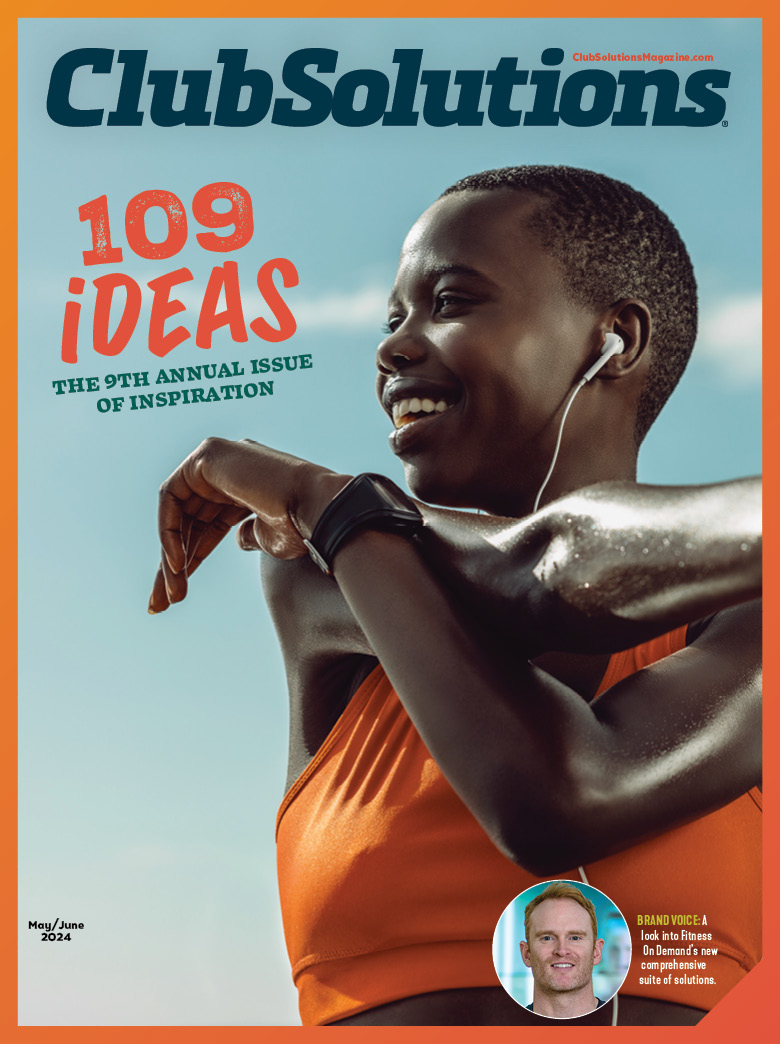Cooper Fitness expert Mary Edwards talks about personal training considerations in a post-COVID world.
As clubs continue to reopen across the U.S., and others face the potential of a second wave of shutdowns, many operators are looking for new revenue streams and rebounding strategies to help offset losses.
In episode #13 of the Club Solutions Magazine podcast, host Rachel Zabonick-Chonko spoke with Mary Edwards, the fitness director and a professional fitness trainer at Cooper Fitness Center in Dallas, on personal training post-COVID. They touch on successes and challenges in letting trainers do in-home sessions, launching an online training business, and much more.
Show Notes
- Cooper Fitness Center shut down March 17, and created a virtual training option using Zoom within a week.
- 28 personal trainers and several small group training (SGT) instructors were quickly familiarized with virtual platforms and teaching classes online.
- Trainers could also use IDEAFit for sessions if they preferred not to use Zoom.
- Cooper allowed trainers to complete in-home training sessions during closures to give them the opportunity to still get work, despite the possibility that trainers might leave the club and take those clients with them. The result was very happy clients and a loyal group of trainers.
- Edwards and her team prioritized transparency and support for their trainers and instructors.
- One challenge in virtual and in-home training was clients not having the equipment they needed.
- Another challenge was trainers having to account for travel time with their in-home sessions, reducing the number of sessions they were able to do during the day.
- It’s important to have personal conversations with trainers about their fears related to COVID-19 and the pandemic. Lend a listening ear where you can.
- Encourage trainers to be supportive of their clients’ concerns about their safety coming back to the gym.
- Cooper’s training staff works on commission, which highly incentivized them to get back to training their clients after the shut downs as soon as possible.
- In the hotel on its campus, Cooper was able to use unused conference rooms as workout spaces for one-on-one training sessions or trainers who had Zoom sessions.
- Demonstrating new safety and distancing measures was critical to getting members back through the doors and into their training sessions after the shutdown for Cooper.
- Trainers also have access to Cooper’s SGT rooms for personal training sessions if no other spaces are available or feasible for clients.
- Edwards checks in with all her trainers at least once every other week to see how they’re doing. She also has an open door policy to encourage an open dialogue and stronger connections.
- “I remember telling someone when I got into the fitness industry, I had no idea I was going to be a psychologist and a trainer — if I’d known that, I probably would’ve gotten a psychology degree first,” she joked.
- Before the pandemic, Cooper didn’t use virtual fitness — every program was in-person. Since then, they’ve pivoted very quickly to virtual offerings.
- Some members and trainers took to virtual training better than others at Cooper. It was important to be patient with everyone involved in order for the program to grow.
- With the exception of SGT, Cooper didn’t change the price of any programs that transitioned to virtual.
- Edwards and her team are creating a program that will refer patients from the Cooper Clinic to a library of virtual programs that can help them recover — strength training, balance and family exercises, for example.
- Stick to what you were doing pre-COVID that was working. Don’t forget the science of exercises and how they pertain to wellness, as well as top-notch customer service and care. These principles carry over from in-person to virtual.
- Don’t abandon your in-person programs to go exclusively virtual.
- Use shutdowns or limited operating capacities as an opportunity to evaluate and improve how you run your club.
- Consult with your trainers — they’re your eyes and ears.
- One way Edwards has been coping with this time is working out more, as well as being more mindful of creative activities.
- She has also been reading more books about subjects she’s always been interested in but never had time to read up on before.
- The most important thing an operator can do is take time for themselves.
Be sure to subscribe to the Club Solutions Magazine podcast on Apple Podcasts, SoundCloud and Spotify.











